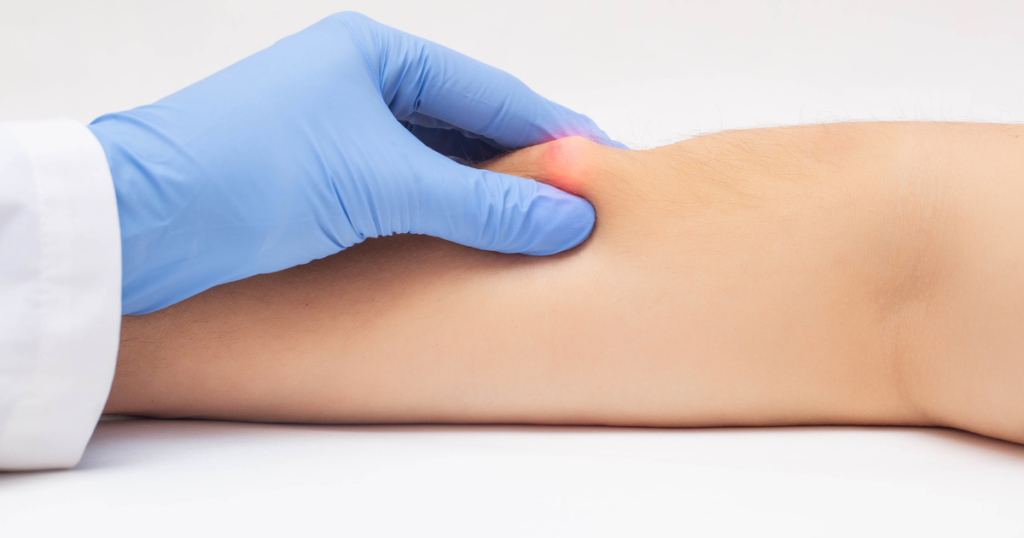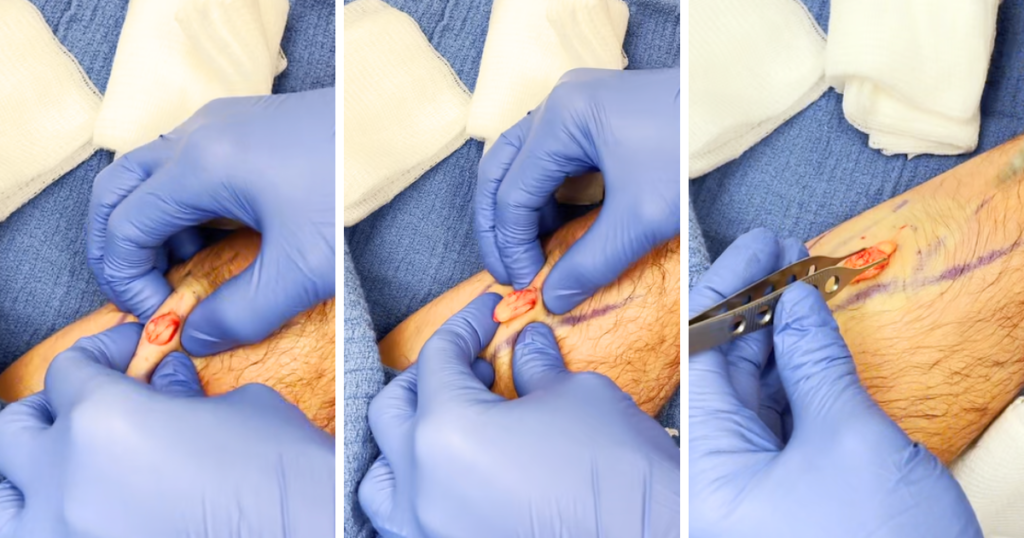Warning, there are some graphic photos below. Woozy readers, beware!
Lipomas, though generally harmless, can raise concerns when discovered beneath the skin. These benign tumors are formed from fat cells and are typically soft, painless, and slow-growing. Don’t fret though, lipomas are usually not a cause for worry. Understanding their characteristics, causes, and possible treatment options can help you make informed decisions if you find yourself dealing with a lipoma.

Uhhh…What are Lipomas?
A lipoma is a common type of benign tumor composed of adipose (fat) tissue. These tumors are usually located just beneath the skin and look kind of like a speed bump under your skin. They often feel soft and rubbery to the touch and can develop anywhere on the body, though they commonly appear on the neck, shoulders, back, arms, and thighs. They may look intimidating, but these growths are typically slow-growing and rarely cause pain or discomfort.
Symptoms and Characteristics of Lipomas
Lipomas are generally easy to identify due to their distinctive characteristics. Some key features of lipomas include:
Texture and Appearance
Lipomas are usually soft to the touch and have a doughy or rubbery consistency (think like a somewhat squishy bouncy ball). They can vary in size from less than one inch to several inches in diameter.
Painlessness
In most cases, lipomas are painless. However, they may cause discomfort if they press against nerves or other tissues.
Mobility
Lipomas are often moveable when touched. Not moveable as in it’s going to travel and go on vacation somewhere in your body, but it moves around the general area it rests. This is because they are located beneath the skin and can be shifted with gentle pressure.
Growth Rate
Lipomas tend to grow slowly over time. While their growth is typically gradual, it’s essential to monitor any changes in size, shape, or appearance.
Location
These fatty bumps called lipomas can develop anywhere on the body, including areas with significant fat deposits (hence the super scientific name we’re adopting here, “fatty bumps”).
Causes and Risk Factors
The exact cause of lipomas is not always clear, but there are several factors that may contribute to their development.
Genetics
There is evidence to suggest that genetics play a role in the development of lipomas. If you have a family history of lipomas, you might be at a slightly higher risk.
Age
Lipomas are more commonly diagnosed in adults between the ages of 40 and 60. However, they are certainly not discriminatory of being pesky to younger people as well.
Gender
While lipomas affect individuals of any gender, some studies suggest that they are more frequently observed in men.
Inherited Conditions
Certain inherited conditions, such as multiple familial lipomatosis, can increase the likelihood of developing multiple lipomas.
Other Factors
While rare, some factors such as trauma or injury to a specific area may trigger the growth of a lipoma.

How Does One Treat Lipomas?
Honestly, most lipomas are asymptomatic and do not require treatment unless they become bothersome due to size, location, or cosmetic concerns. Treatment options vary and depend on factors such as the size, location, and individual preferences. It’s important to consult a medical professional (https://juniperdermatology.com/patients/#self-scheduling) to determine the most appropriate course of action.
Observation
In many cases, healthcare providers may recommend simply monitoring the lipoma without intervention. If the lipoma is not causing discomfort or affecting your quality of life, observation may be a reasonable approach.
Surgical Removal
Surgical excision is the most common method of removing lipomas. The procedure involves making a small incision and removing the tumor along with any surrounding tissue. This method ensures complete removal and minimizes the risk of recurrence.
Liposuction
For larger lipomas, liposuction may be used to remove the growth. During this procedure, a thin tube is inserted through a small incision, and the fat is suctioned out. Yummy, right?
Steroid Injections
In some cases, a healthcare provider may recommend injecting steroids into the lipoma to reduce its size. This approach is often considered for lipomas that are difficult to remove due to their location.
Lipoma Removal Techniques
Depending on the characteristics of the lipoma, techniques such as minimal excision extraction or laser removal may be considered.

When to Seek Medical Attention
While lipomas are generally harmless, it’s important to seek medical attention if you notice any of the following:
Rapid Growth
If a lipoma suddenly grows or changes in appearance, consult a healthcare provider (https://juniperdermatology.com/patients/#self-scheduling).
Pain or Discomfort
While lipomas are usually painless, if you experience pain or discomfort in the area of a lipoma, it’s advisable to seek medical evaluation.
Uncertainty
If you’re unsure whether a growth is a lipoma or another type of growth, or you’re feeling anxious about it, come see us! We’ll be happy to check it out and help put your mind at ease.
Cosmetic Concerns
If a lipoma is affecting your appearance and causing cosmetic concerns, schedule an appointment and we’ll take a look and help you find a solution you feel confident about (https://juniperdermatology.com/patients/#self-scheduling).
Lipomas, although benign, can vary in size and location. Understanding the symptoms, causes, and treatment options associated with lipomas is essential for decision-making, but we’re here to help guide you through the process. If you’re concerned about a growth on your body, schedule an appointment so we can take a look and give you a proper diagnosis. Whether you choose observation, surgical removal, or another treatment method, the goal is to ensure your comfort, peace of mind, and overall health!


